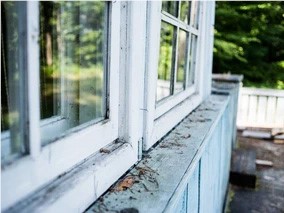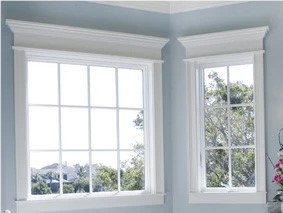
With each day feeling warmer than the last and the heat of summer right around the corner, it’s easy to forget all about typical winter problems. After months of shoveling snow, blowing on your frozen hands, and piling blanket after blanket on your lap to fight off the nasty drafts in your home, you would be forgiven for focusing all your attention on the joy the warmer weather brings. But prudence demands that you do not forget about the problems of winter, but look for ways to solve them before the weather changes again in the fall. Drafts passing through the window are a particularly persistent problem that can keep you and your family shivering in your home year after year. Take advantage of the spring and summer to deal with the problem so your home is as toasty as can be when the days grow short and the trees shed their leaves.
What Causes Drafts
Before attempting to fix a drafty window, it is helpful to know exactly what the problem is. You know that there is air from the outside sneaking in, but where is the breach occurring? What exactly is the problem? Here are four common causes of a drafty window.
Broken or Ineffective Seal
This is perhaps the most common cause of those pernicious wintry drafts. A damaged seal will allow air to pass between the panes of glass. Mold, extreme heat or cold, rough treatment during shipping, and normal wear and tear can all lead to a faulty seal.
Shoddy Installation
For a window to be effective in keeping out the cold, it must be properly fit and installed. An amateur or a do-it-yourselfer is liable to make an error in installation that will leave inopportune gaps for cold air to seep through. If you are not a professional and did your own installations, then, no matter your level of handiness, this is almost certainly the reason for the drafts.
Cracked caulking
Caulk is applied to window frames where they meet the siding of the home, and this caulking is crucial in preventing the passage of air. Over time, however, the caulk tends to become brittle and crack, leaving gaps open to the outside air. Try feeling for drafts around the caulking to detect if this is the cause of the drafts. This could take some time, patience, and lots of feeling around, because the drafts are not always obvious when you're looking for them.
Windows from a Bygone Era
Modern windows are especially designed to be energy efficient and prevent drafts. They are usually multi-paned and contain argon gas that prevents the passage of air. Older units, especially those with iron or wooden frames, become drafty faster than their modern, vinyl counterparts. They may look nice and give your house a cool retro vibe or old-timey feel, but they're also making you shiver your way through the coldest months of the year.
How to Reduce or Eliminate Drafts
There are several steps you can talk to reduce the wintry drafts in your home. In many cases, replacing the units is not ultimately necessary. Here are four essential tips for reducing or eliminating those pesky drafts.
Weatherstripping
Using weatherstripping is an easy and effective way to eliminate drafts passing through window jambs. Both felt and foam tape varieties of weatherstripping are available for purchase, as well as V-channel tape for casement or double-hung windows. Get your supplies ready now so that when fall arrives you're ready to rumble. Then, as temperatures start to plummet, clean the window jambs with soap and water, shut the windows, and apply the weatherstripping tape.
Window Film
Window film is another easy method for do-it-yourselfers looking to keep out the cold. The film looks like plastic wrap and must be spread around the window jambs from the inside. Then all you have to do is blow-dry the film with a simple hair dryer so it sticks in place and seals.
Thermal Curtains
If you are not worried about the having plenty of natural light in your homer during winter time, then insulated thermal curtains are a great way to avoid pesky drafts. You can always open them during the day if you want to let the sunlight in, but then close them at night to halt the passage of cold air.
Re-caulking
If you determine that the caulking is the culprit in the case of the persistent drafts, then re-caulking is the only way to truly eliminate the problem at its source. It is a bit more of an involved process than the simpler solutions listed above, but it also represents more of a long term fix. Tubes of caulking are easy to come by, and then it is just a matter of applying it to the exterior of the window frames, fortifying the faulty, existing caulking.
By applying these methods, there is a good chance you will finally manage to stop those drafts and make your home the warm, comfortable den you always hoped it would be. If the drafts persist, then you might have a more serious problem that requires professional attention. Fletcher Construction of Stafford, Virginia has the expertise and equipment to help solve the problem. Maybe your window units are old and require replacement. Maybe it’s time to ditch the old wooden models for their modern, vinyl equivalents. In any case, Fletcher Construction will have the answers, and their professionals will help resolve the issue.
Subscribe to Fletcher Home's Blog






Comments